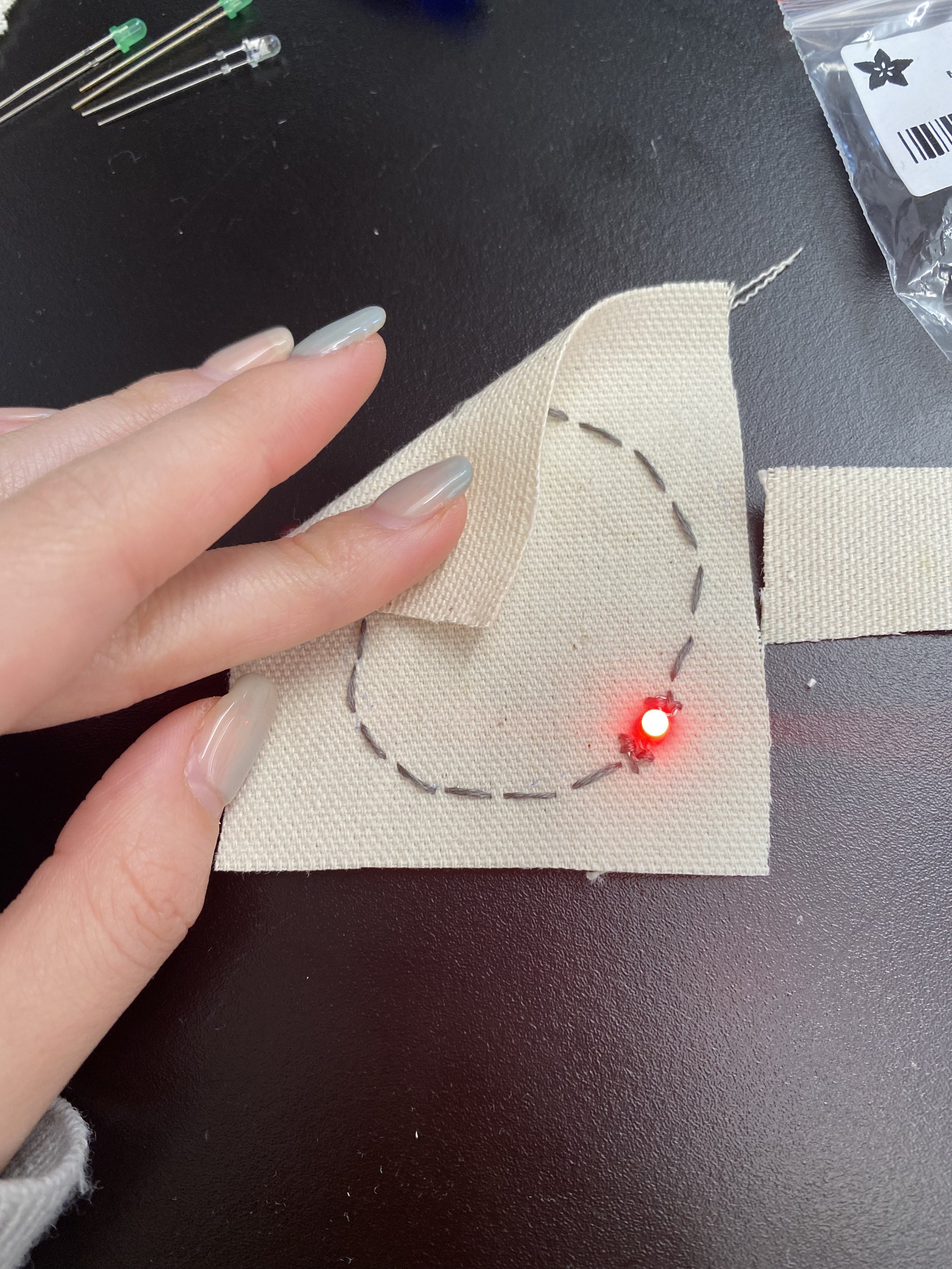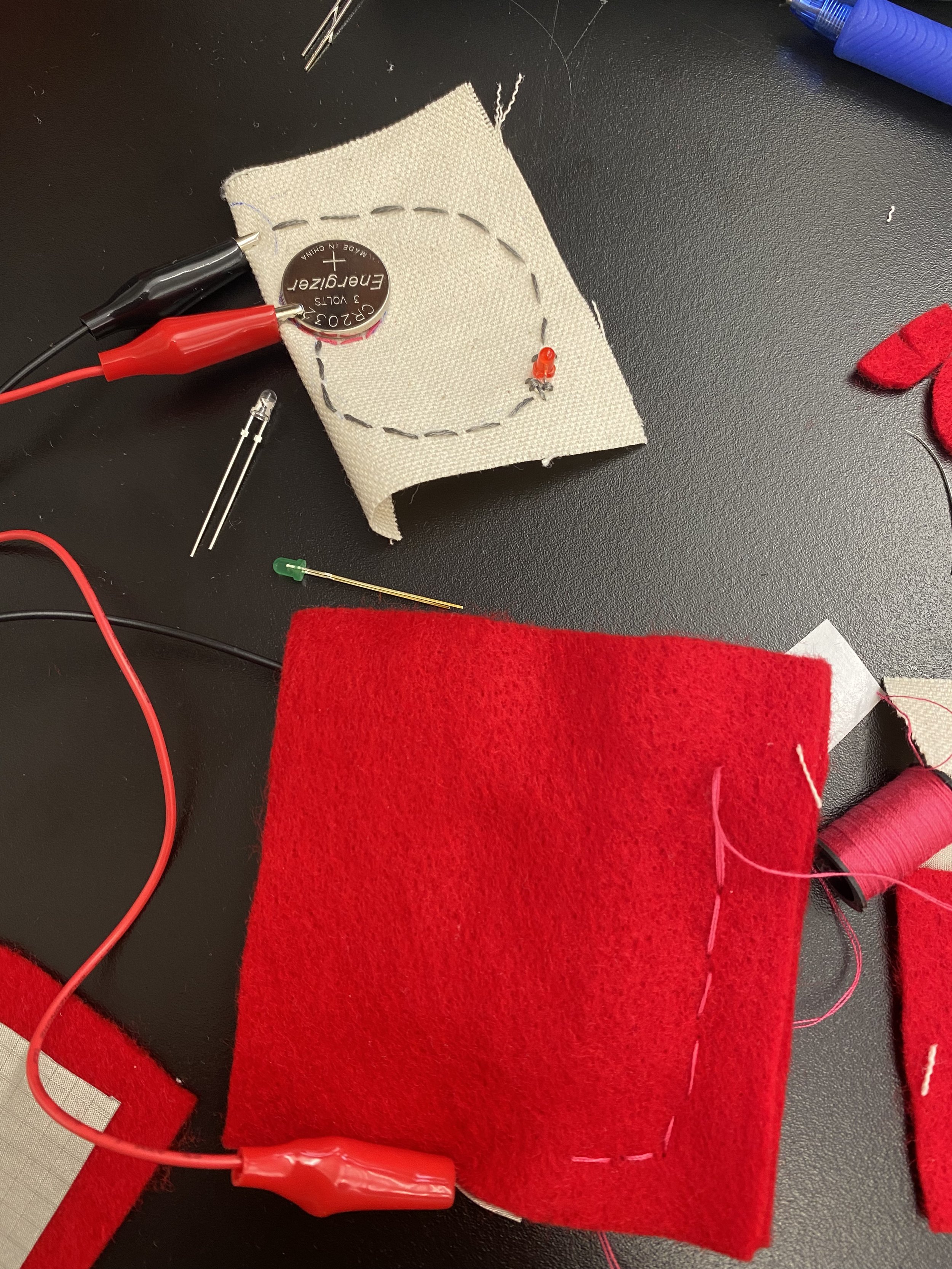Textile Interface
Basic Swatches
Hand sewn LED circuit made with conductive thread
Soft Button
Pinch Switch
Short Circuit Switch
Created a switch that turns the LED on or off by forcing a short circuit
Analog Sensor
For our analog sensor, we practiced using the sewing machine to create cleaner lines as well as to remove the tediousness of hand sewing.
Final Project - Capacitive Piano
For our final project, we created a capacitive piano. Our main focus was to utilize textile interfaces to create a product where the user could not tell that electronic components were being used. This design focus led us to work with a capacitive board. Using conductive thread, a capacitive board, and Garageband, we were able to create a functioning instrument that is a hybrid of a piano and a harp.
After creating our initial piano, we realized that we wanted to create a wider range of notes. Therefore we decided to create an attachment that when held, would allow the user to play a higher octave of notes.
Design Considerations
What is your interface for / to? Physical actuators? Something screen-based? Sound?
We created a digital musical instrument. It has strings like a harp or guitar, but the arrangement of the inputs is like a piano or other keyboard instrument. It is also an electric instrument -- the strings do not produce sound themselves. (The interface can easily be repurposed for other kinds of finger input.)
If you are sending data to another software what is it and what communication protocol will you use?
It interfaces with the computer using MIDI.
Where does the interface physically live? In a wearable? In an object? On a piece of furniture (table, chair, etc)? In a space (floor, wall, ceiling)?
Our original plan was to have it be a large, hanging, or wall-mounted piano-like instrument. We eventually decided to create a smaller, tabletop device.
What is your material palette, conductive, resistive, and non-conductive?
We used conductive material for the strings.
What is the scale of the interface? Tiny? Huge? Somewhere in between? What body part is meant to activate it?
It rests in front of the user and is finger-activated. The strings are as far apart as keys on a piano (0.93in).
What mood / attitude / approach are you hoping to incite in your users? Is a delicate interaction? Rough? Tender? Formal?
For our original large-scale version, we were hoping to incite gentle, curious exploration. We weren't sure where we were going with the final, smaller version, but in our testing, it seems to have evoked the same interactions with our classmates.
What type of switches / sensors are you constructing? Digital, analog, or both? How many?
The electronics of the device are quite simple: We use 7 conductive threads as a capacitive sensor. The threads are wired to an MPR121 capacitive sensor board, which can handle up to 12 inputs -- perfect for if we wanted to add black keys as well (which was our original plan).
What is the mapping between the sensor data and whatever is responding to it?
When the thread is touched, a MIDI note is played. When the thread is released, the note is stopped.
What materials don’t you have that you might need?
We were able to find all the materials we wanted, but with more time and resources, we'd ideally like to to build a larger-than-life piano!




